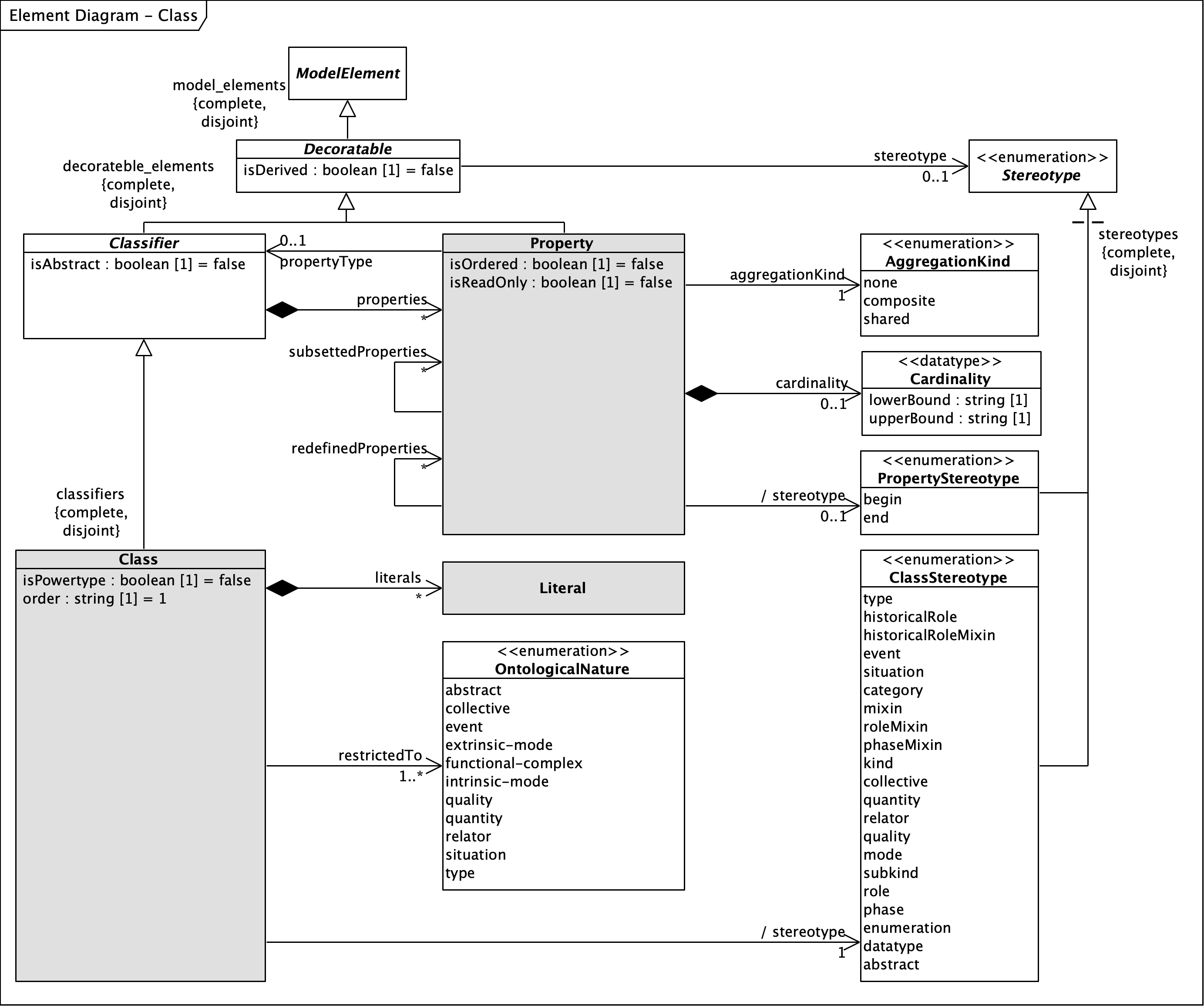Overview
Through the OntoUML Metamodel, the OntoUML should be seen as a FAIR language by design, which means that it incorporates into the metamodel the principles of Findability, Interoperability, Accessibility, and Reusability, all relevant principles for ontologies as artifacts in special in a web context.
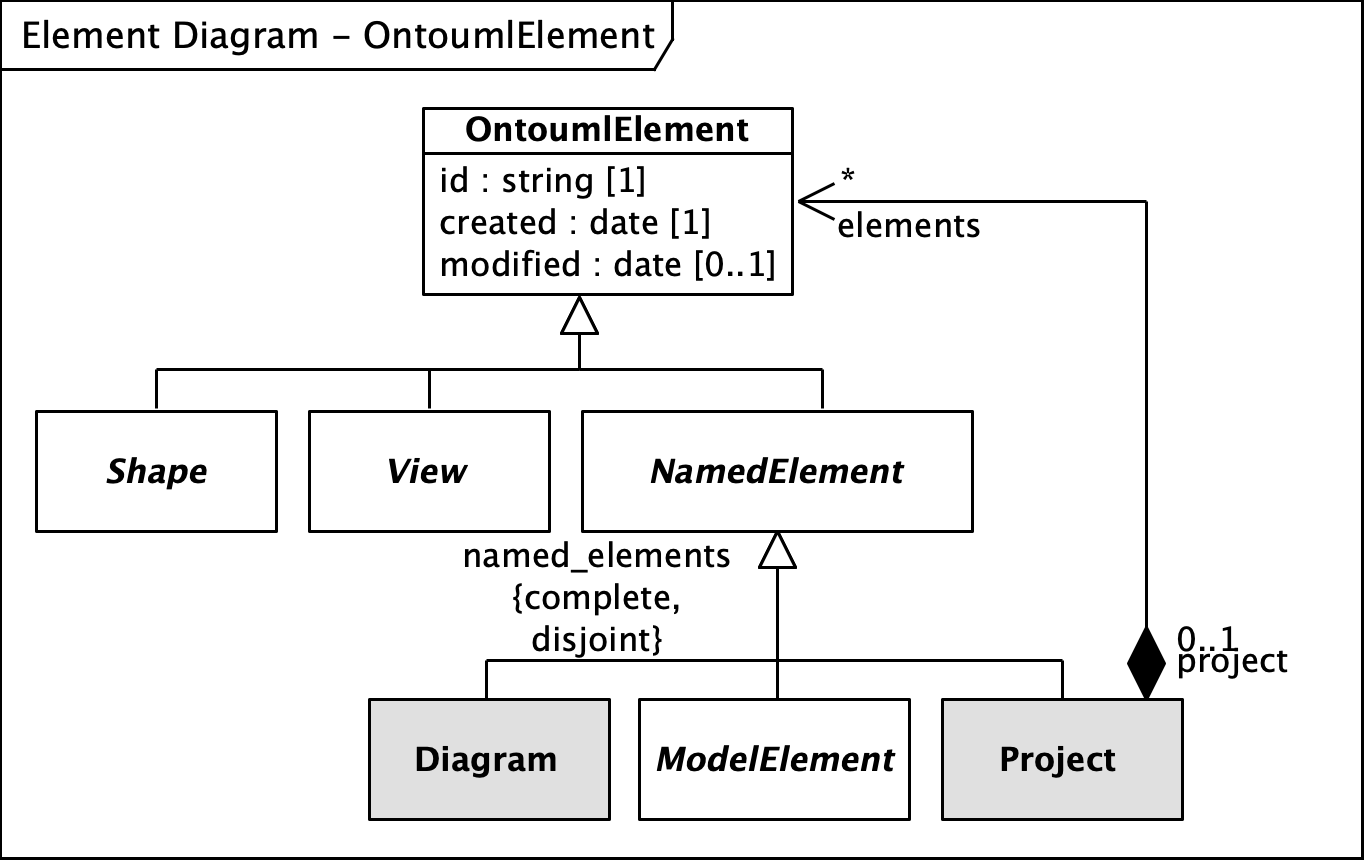
In OntoUML, all elements that bear an identifier instantiate OntoumlElement. Besides an id, these elements also have the properties created and modified of type date. All elements within a single ontology are aggregated in Project element (except for projects themselves). Moreover, every instance of OntoumlElement can be organized as part of either the abstract syntax (i.e., ModelElement) or the concrete syntax (i.e., Diagram, View, or Shape) of the language.
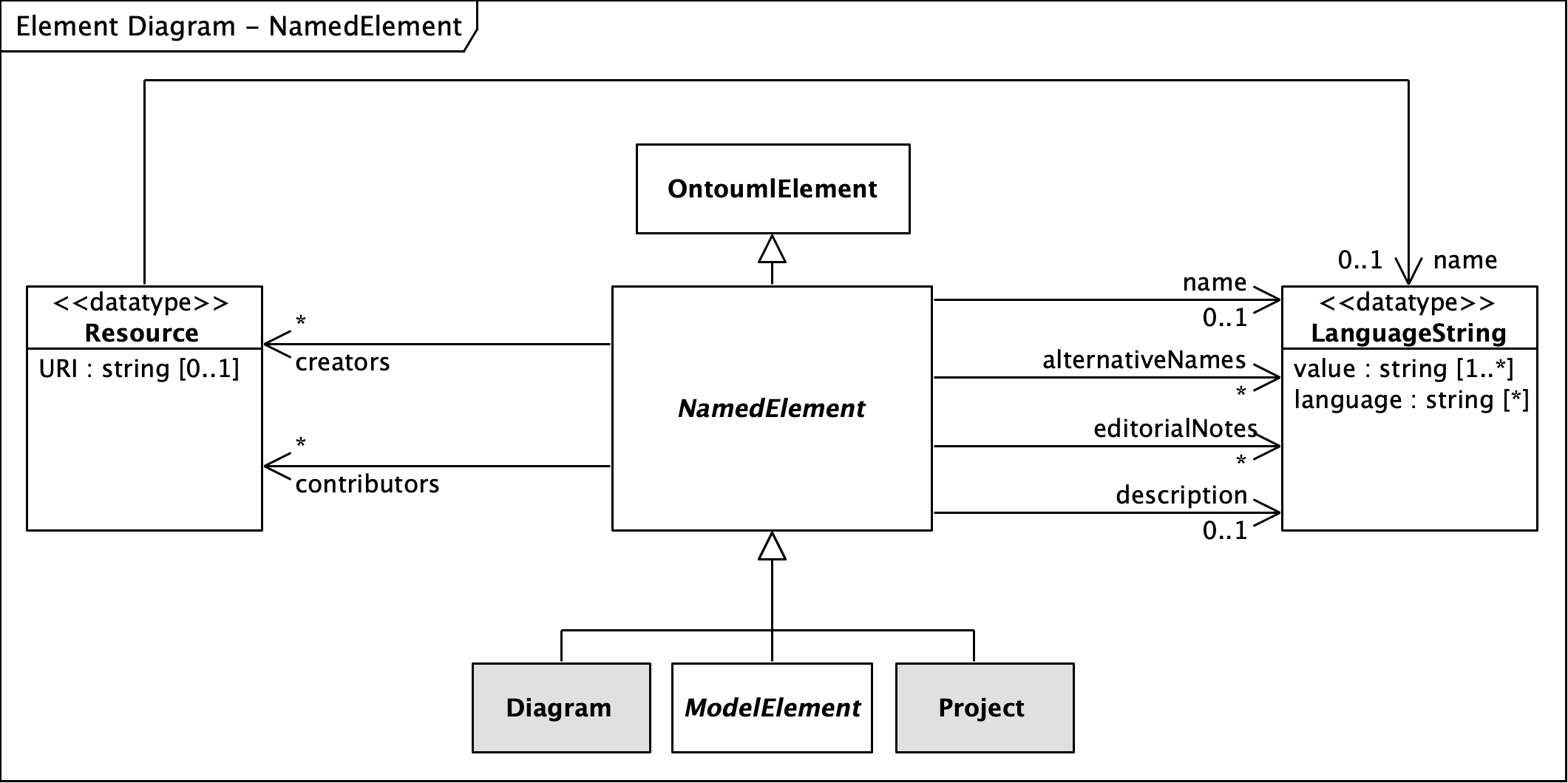
In addition to an identifier, instances of NamedElement (i.e., diagrams, model elements, and projects) can also have descriptive information like name, alternativeNames, description, and editorialNotes, all of which are multilingual properties of type LanguageString. The datatype Resource is used whenever a reference to an external resource is necessary, either through a name or a URI. This is the case for the properties creators and contributors, for instance.
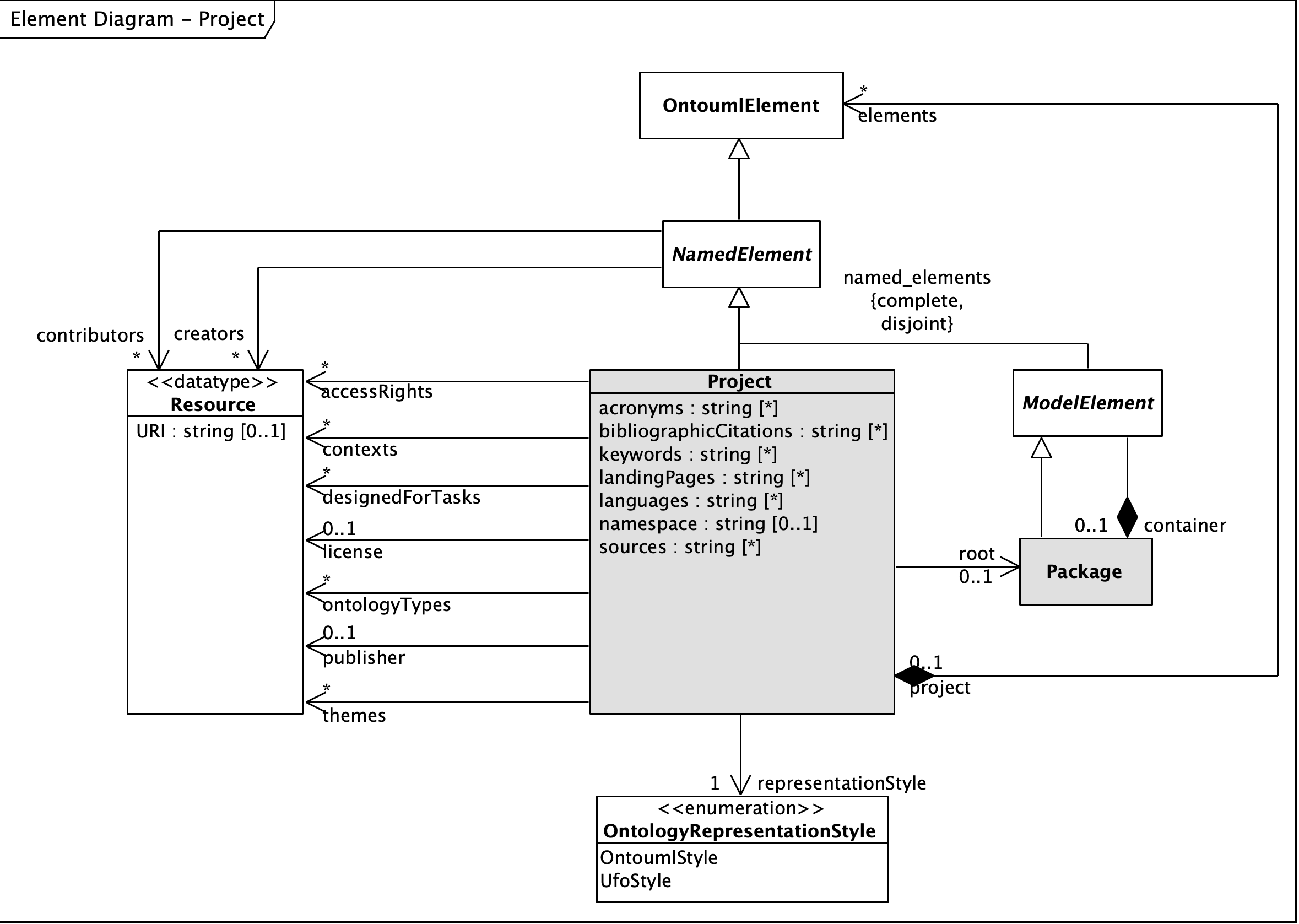
Instances of Project not only aggregate the entire ontology (i.e., the elements of both concrete and abstract syntaxes), they also have the metadata relevant for the entire ontology (e.g., theme and publisher). The namespace property also support the definition of a prefix for the IDs of all other elements that are not already formed as a URI.
Abstract Syntax
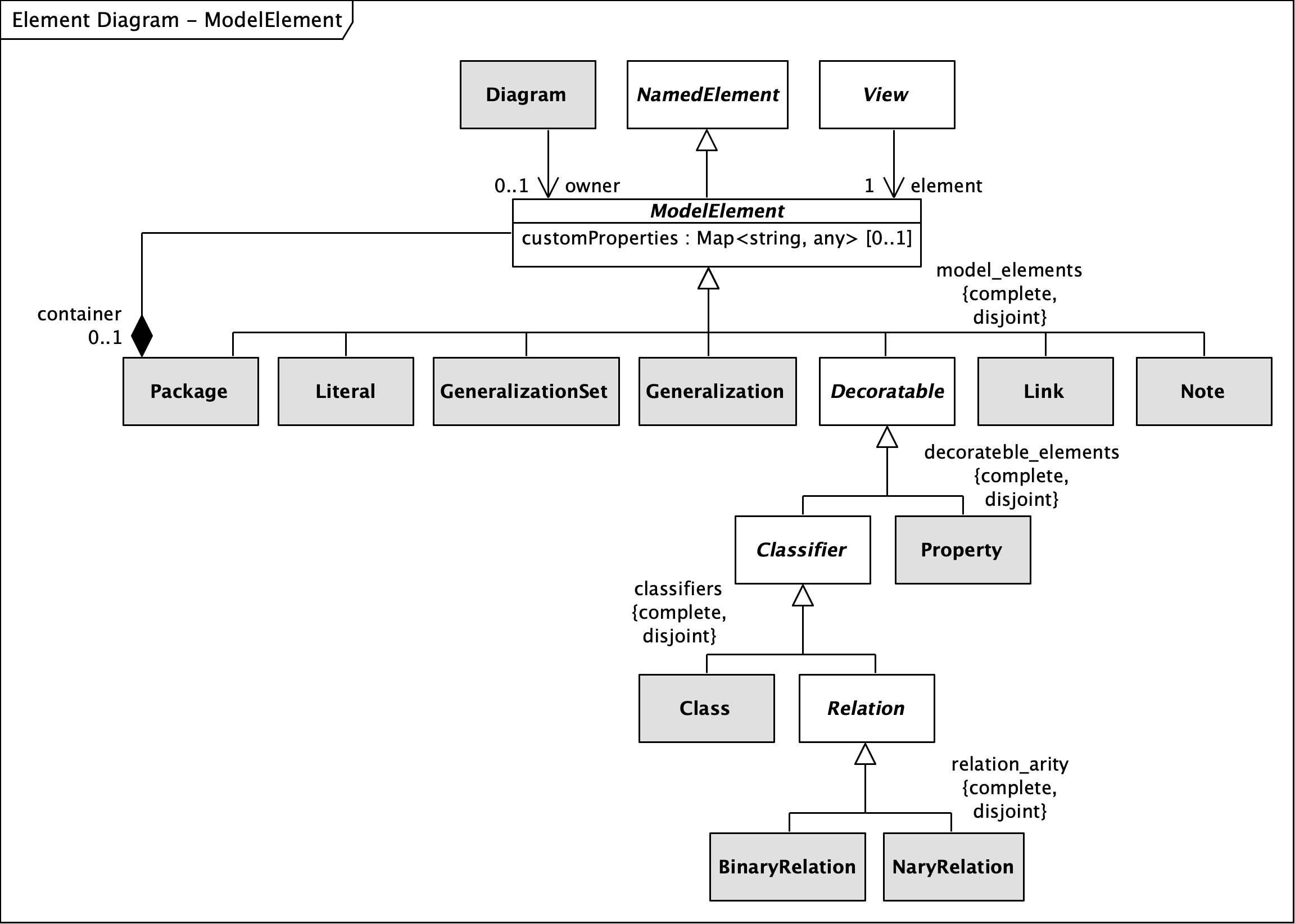
All elements that have are explicitly represented in an OntoUML diagram specialize ModelElement: Package, Class, BinaryRelation, NaryRelation, Property, Literal, Generalization, GeneralizationSet, Note, and Link. This representation is done through specific type of View for each type of ModelElement. In addition, a ModelElement can also be the owner of a Diagram.
